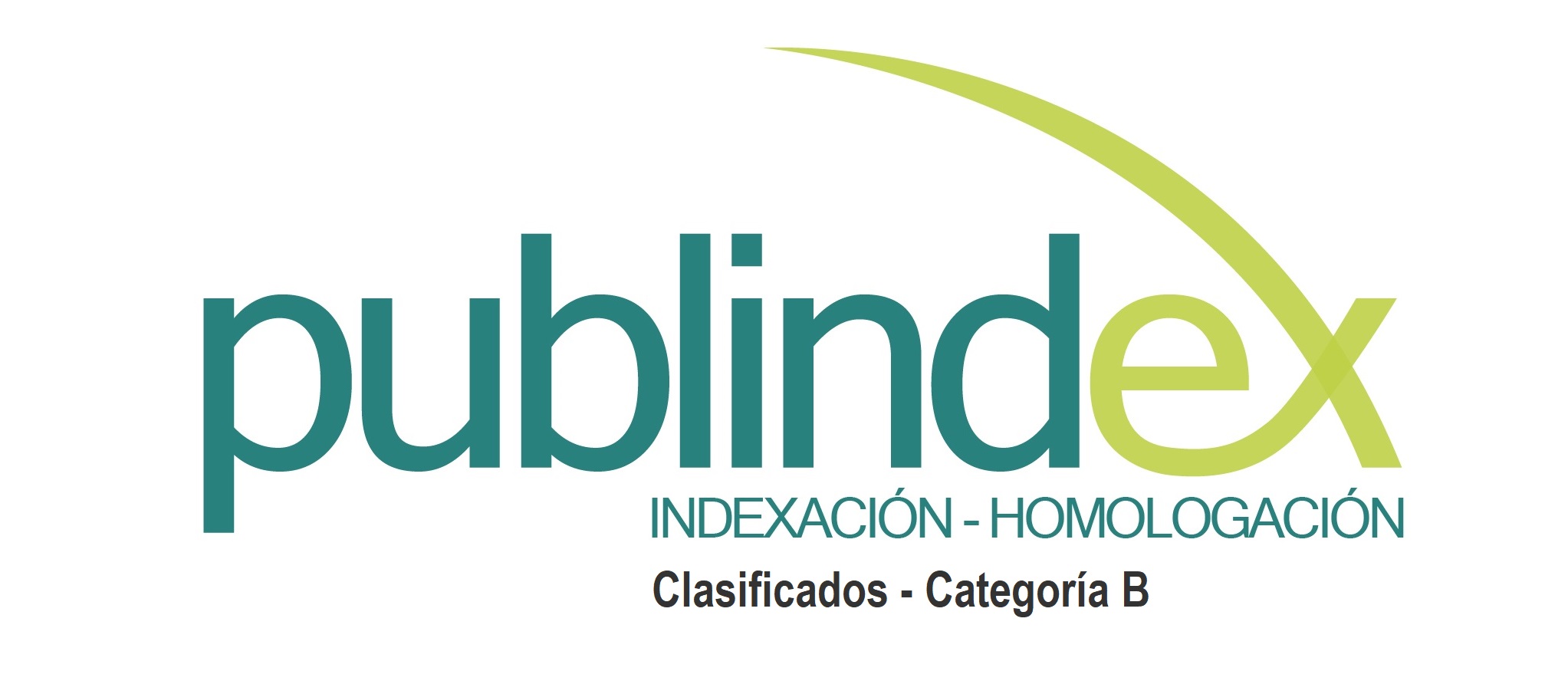Production and geochemical characterization of gas in the Lower Magdalena basin, Colombia. Implications for natural gas and liquefied petroleum gas prospectivity
DOI:
https://doi.org/10.14482/inde.43.02.986.861Keywords:
Cracking, dry gas, gas production, molecular and isotopic composition, wet gasAbstract
In the Lower Magdalena Valley (VIM) basin, 1201 (MBPE) have been discovered (OOIP & OGIP/ oil and gas). Gas resources discovered reaches 3.57 TPC and include dry gas and wet gas. During 2021 the ANH (National Hydrocarbons Agency) audited the production of 29 fields with a total production of 90908 MPC (99.91 GPCG), which account for 15% of total production in the country. The main reservoirs in the basin correspond to sandy facies of the Lower Ciénaga de Oro Formation (late Oligocene) and calcareous facies of the Upper Ciénaga de Oro Formation (early Miocene). The gas produced varies between dry with more than 98% methane and humid where the proportion of LPG (C3+) is greater than 5%. Based on the geochemical characterization, wet gases are associated with primary kerogen cracking and dry gases with secondary crude oil cracking. The presence in the basin of a wide spectrum of liquid and gaseous hydrocarbons represents an exploratory opportunity, since it is a basin where it is possible to find natural gas (NG/C1) and wet gas (C3-C5), the main source of liquefied petroleum gas (LPG).
References
C. Mora, C. Posada, J. Osorno, “Evaluación de los recursos de hidrocarburos remanentes en Colombia (Yet to find),”Agencia Nacional de Hidrocarburos plan 2020. Aportes a la exploración de hidrocarburos en Colombia, pp. 16-22, Bogotá, Colombia, Feb 2020.
A. Pardo, C. Mora, N. Gallego, “Evolución geológica, sistemas petrolíferos y prospectividad del gas en la subcuenca Plato (Valle Inferior del Magdalena),” Agencia Nacional de Hidrocarburos, pp. 76-144, Bogotá, Colombia, Feb 2020.
A. Pardo, C. Mora, N. Gallego, L. Rendón, A. Arenas, S. Echeverry y J. Osorno, “Potencial petrolífero en la Sub-cuenca de Plato (Valle Inferior del Magdalena, Caribe colombiano),” Agencia Nacional de Hidrocarburos plan 2020. Aportes a la exploración de hidrocarburos en Colombia, pp. 98-110, Bogotá, Colombia, Feb 2020.
Agencia Nacional de Hidrocarburos, Ene. 2022, “Producción Fiscalizada Gas 2021,” Agencia Nacional de Hidrocarburos, Operaciones y Regalías, Sistemas Integrados de Operaciones, Estadísticas de producción. [Online]. Disponible: https://www.anh.gov.co/es/operaciones-y-regal%C3%ADas/sistemas-integrados-operaciones/estad%C3%ADsticas-de-producci%C3%B3n/
C. Montes, G. Guzmán, G. Bayona, A. Cardona, V. Valencia y A. Jaramillo, “Clockwise rotation of the Santa Marta massif and simultaneous Paleogene to Neogene deformation of the Plato-San Jorge and Cesar-Rancheria basins,” Journal of South American Earth Sciences, vol. 29, no. 4, pp. 832-848, Oct. 2010. doi: https://doi.org/10.1016/j.jsames.2009.07.010
J.A. Mora, O. Oncken, E. Le Breton, A. Mora, G. Veloza, V. Vélez y M. de Freitas, “Controls on forearc basin formation and evolution: Insights from Oligocene to Recent tectono-stratigraphy of the Lower Magdalena Valley basin of northwest Colombia,” Marine and Petroleum Geology, vol. 97, pp. 288-310. Nov. 2018. doi: https://doi.org/10.1016/j.marpetgeo.2018.06.032
H. Reyes, B. Montenegro, y P. Gómez, «Tectonoestratigrafía y evolución geológica del Valle Inferior del Magdalena», Bol. Geol., vol. 26, nº. 42, pp. 19–38, Mar. 2004.
R. Bernal-Olaya, P. Mann y A. Escalona, “Cenozoic tectonostratigraphic evolution of the Lower Magdalena Basin, Colombia: An example of an under-to overfilled forearc basin,” Memoir 108: Petroleum Geology and Potential of the Colombian Caribbean Margin, vol. 108, pp. 345-398, 2015. doi: 10.1306/13531943M1083645
R. Aguilera, V. Sotelo, C. Burgos, C. Arce, C. Gómez, J. Mojica, H. Castillo, D. Jimenez y J. Osorno. ”Organic Geochemistry Atlas of Colombia,” Earth Sciences Research Journal, vol. 14 Special Edition, pp. 102-112 [Online]. Disponible: https://www.anh.gov.co/documents/14/Atlas_Geoquimico_2010.pdf
UPTC-ANH, “Evaluación de la prospectividad del gas en Colombia en las cuencas onshore con producción comercial.” Agencia Nacional de Hidrocarburos, pp. 453-461, Bogotá, Colombia, Mar. 2021.
G. Guzman, “Stratigraphy and sedimentary environment and implications in the Plato Basin and San Jacinto Belt Northwestern Colombia,” Ph.D. dissertation, Dep, pp. 59-110, Geology, Univ. de Liège, Lieja, Bélgica, 2007. [Online]. Disponible: https://recordcenter.sgc.gov.co/B21/Tesis-276/Documento/Pdf/Tesis-276.PDF
H. Bermudez. (Sept. 2016). Esquema estratigráfico de secuencias del registro sedimentario del Cinturón Plegado de San Jacinto, Caribe colombiano. XII Simposio Bolivariano Exploración Petrolera en Cuencas Subandinas, pp. 3-11 [Online]. Disponible:
J.A. Mora, M. Ibáñez-Mejía, O. Oncken, M. De Freitas, V. Vélez, A. Mesa, y L. Serna, “Structure and age of the lower Magdalena valley basement, northern Colombia: new reflection-seismic and U-Pb-Hf insights into the termination of the central Andes against the Caribbean basin,” Journal of South American Earth Sciences, vol. 74, pp. 1-26, Mar. 2017. doi:
https://doi.org/10.1016/j.jsames.2017.01.001
M. Schoell, “Genetic characterization of natural gases,” AAPG Bulletin, vol. 67, no.12, pp. 2225-2238, Dec. 1983.
A. Prinzhofer y E .Pernaton, “Isotopically light in natural gas: bacterial imprint or diffusive fractionation”. Chemistry and Geology, vol. 142, no 3-4, pp. 193-200. Oct. 1997. doi: https://doi.org/10.1016/S0009-2541(97)00082-X
H. Zhiyong, A .Murray y J. Moore. (Sept. 2021). Top-Down Petroleum Systems Analysis: Prediction of Petroleum Phase and Properties. Presentado en The Geological Society, London. [Online]. Disponible:
R. Khaled y C. Arouri Herrera, “Phase envelopes in reservoir fill analysis: Two contrasting scenarios,” Scientific Reports, vol. 14, no1, pp. 5601. March 2024. doi: https://doi.org/10.1038/s41598-024-56058-6
B. P. Tissot y D. Welte, “Production and Accumulation of Organic Matter” in Petroleum Formation and Occurrence,” Springer Science & Business Media, in Springer-Verlag, New York, NY, US, 1984. doi:
https://doi.org/10.1029/eo066i037p00643
A. García, E. Galván, F. Samaniego, “Comportamiento termodinámico de los yacimientos de gas seco, gas húmedo y gas y condensado”. Ingeniería Petrolera, vol. 59, no 1, pp. 4-21. Feb. 2019.
UPTC-MINCIENCIAS-ANH “Hábitat geológico, prospectividad, sostenibilidad socioambiental y económica del gas húmedo (GLP) en Colombia como combustible de transición energética,” Agencia Nacional de Hidrocarburos, pp. 23-28, Bogotá, Colombia, reporte en revisión, 2023.
F. Lorant, A. Prinzhofer, F. Behar y A. Huc, “Carbon isotopic and molecular constraints on the formation and the expulsion of thermogenic hydrocarbon gases,” Chemical Geology, vol. 147, no 3-4, pp. 249-264, May. 1998. doi: https://doi.org/10.1016/S0009-2541(98)00017-5
A. Rangel, B. Katz, V. Ramírez, E. Vaz Dos Santos Neto, “Alternative interpretations as to the Origin of the hydrocarbons of the Guajira Basin, Colombia,” Mar. and Petroleum Geology, vol. 20, no 2, pp. 129-139. Feb. 2003. doi: https://doi.org/10.1016/S0264-8172(03)00061-8
S .Tobias, “Interpreters and near-field exploration: The role of leadership, culture, and organizational impedance contrasts,” Interpretation, vol. 6, no 2, pp. 5M-12M, May. 2018. doi: https://doi.org/10.1190/INT-2018-0214-PS.1
Downloads
Published
How to Cite
Issue
Section
License
Copyright (c) 2025 Revista Científica Ingeniería y Desarrollo.

This work is licensed under a Creative Commons Attribution-NonCommercial 4.0 International License.









